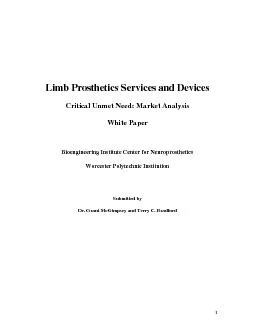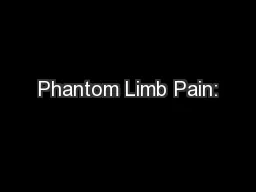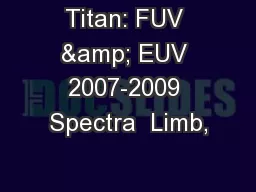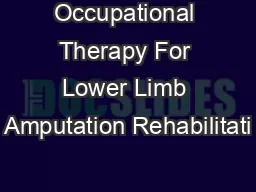PDF-Limb Prosthetics Services and DevicesCritical Unmet Need: Market Analy
Author : lois-ondreau | Published Date : 2015-08-26
1 2 ContentsPageIntroductionScope of Market AnalysisUS Limb Amputation IncidentsMarket TrendsThird Party ReimbursementFrequent Replacementand Reimbursement LimitsNeuroprostheticsConclusionSourcesApp
Presentation Embed Code
Download Presentation
Download Presentation The PPT/PDF document "Limb Prosthetics Services and DevicesCri..." is the property of its rightful owner. Permission is granted to download and print the materials on this website for personal, non-commercial use only, and to display it on your personal computer provided you do not modify the materials and that you retain all copyright notices contained in the materials. By downloading content from our website, you accept the terms of this agreement.
Limb Prosthetics Services and DevicesCritical Unmet Need: Market Analy: Transcript
Download Rules Of Document
"Limb Prosthetics Services and DevicesCritical Unmet Need: Market Analy"The content belongs to its owner. You may download and print it for personal use, without modification, and keep all copyright notices. By downloading, you agree to these terms.
Related Documents














